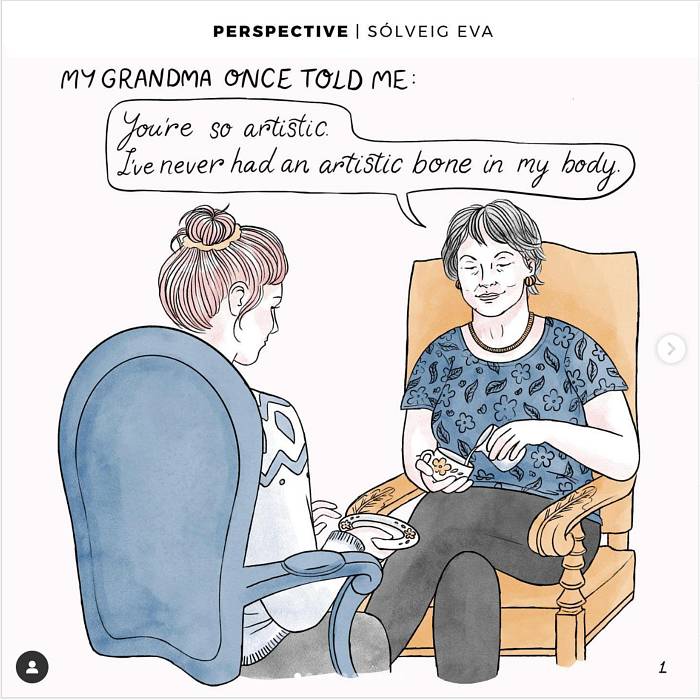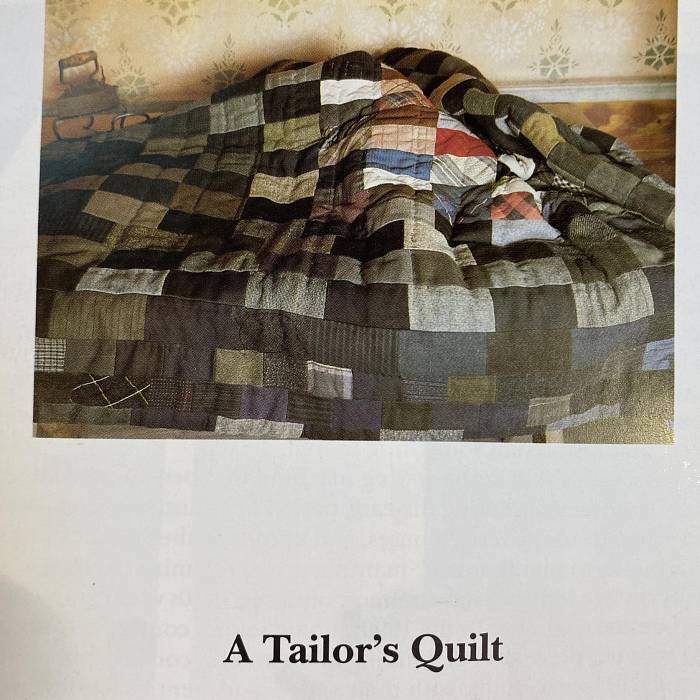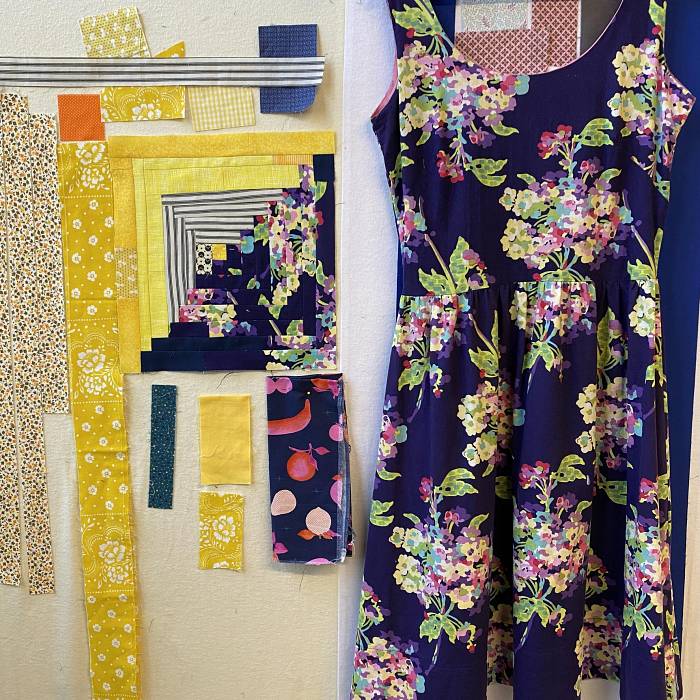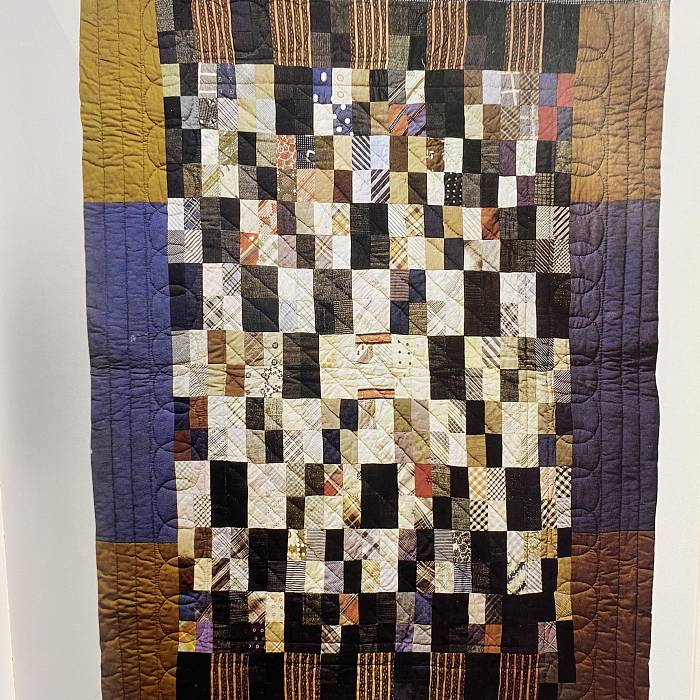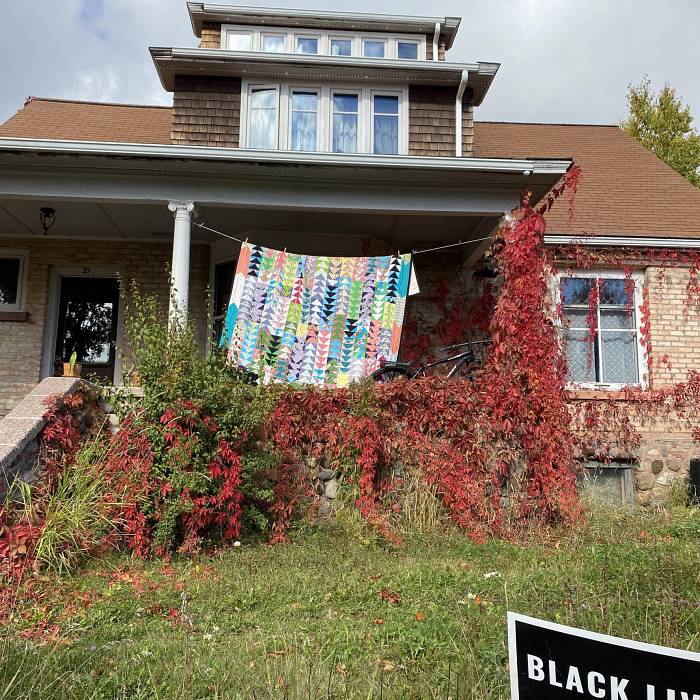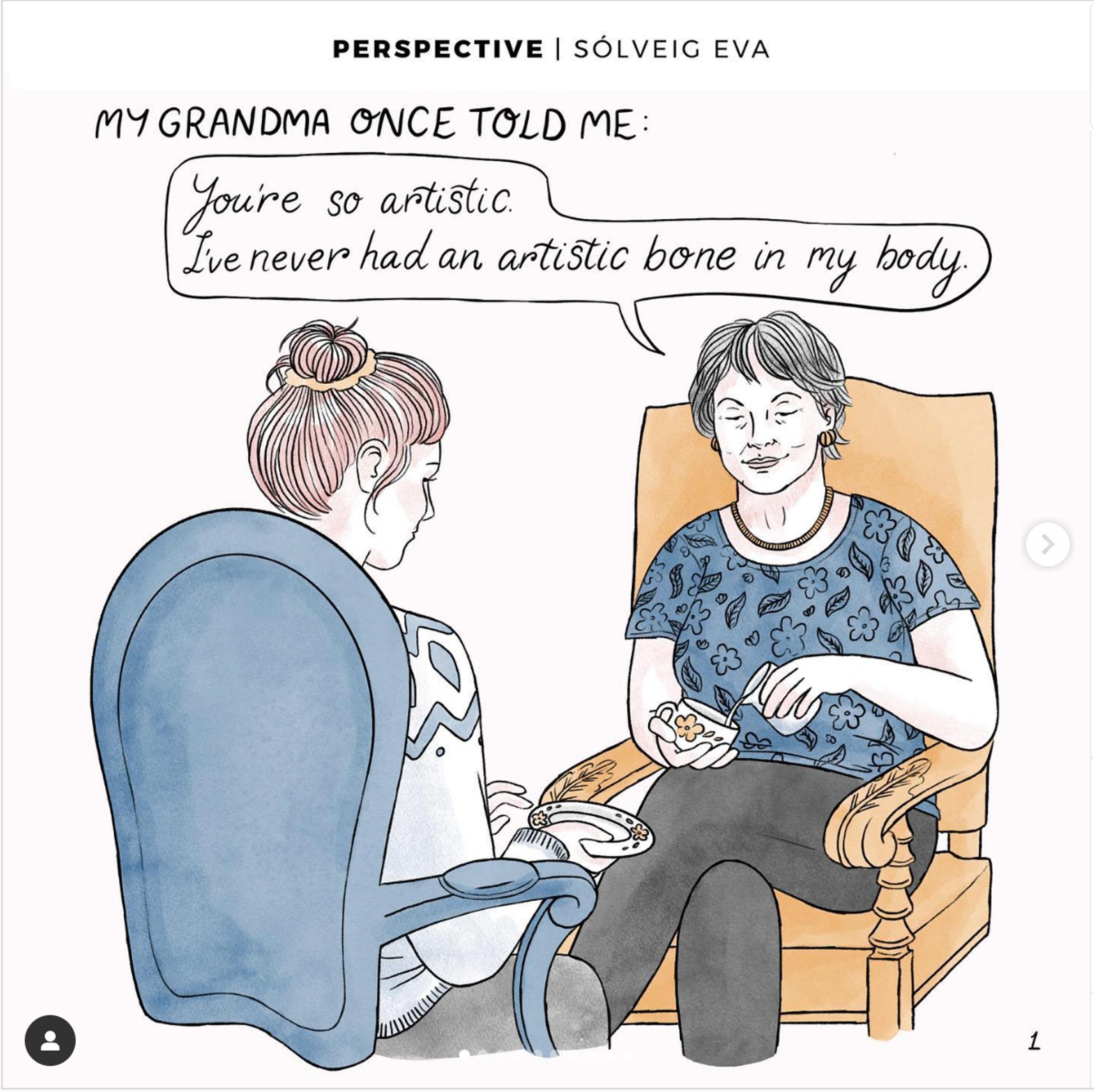
Start Seeing Quilts
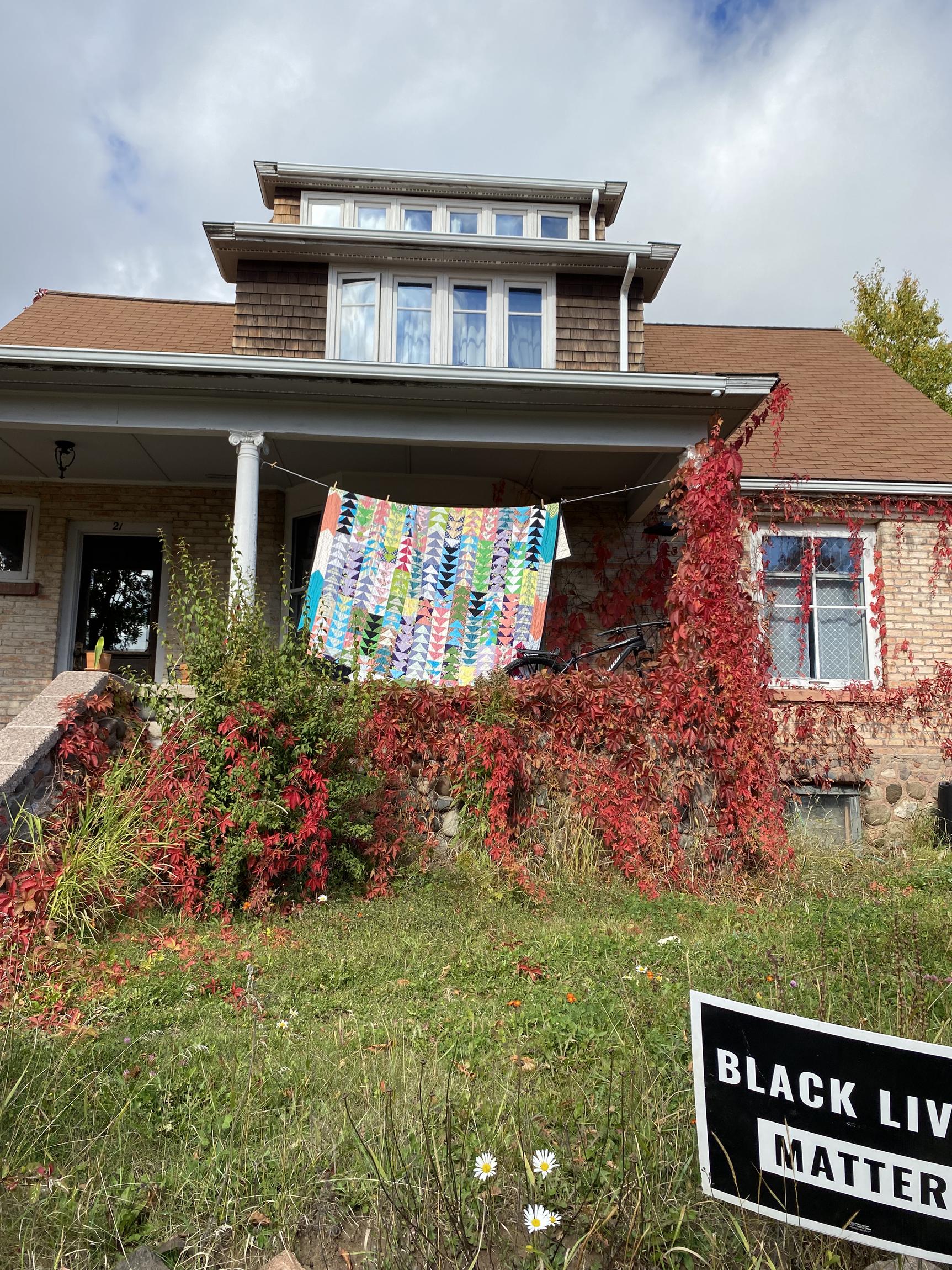
Laura talks about joining ADP as a quilter, a skill which doesn't fit neatly into either "art" or "craft". So what? Connections forged by quilting bring out newfound creativity in people of all ages and genders.
A few months ago, I saw this comic (pictured below) circulating on social media. It feels especially appropriate during a moment when the value of all kinds of work is being examined; especially the kind of work typically done by women. The comparison is being drawn between creative work made by women and that made by men. This extends to the materials, tools, and subject matter as well.
The number one response I get when I say that I make quilts or am sitting at a table demonstrating my work, is, “my grandma made quilts.” Depending on their tone, I hear either excitement and a spark of recognition, or a vague dismissal in the speaker’s voice. Because I love stories, I ask them questions about their quilt-making grandmas. Some people share vivid descriptions of quilts, or memories of their grandmas and other relatives that made quilts. Some of them have taken up quilting themselves.
Then there are the people who mention their grandmas and quilts in a way that tells me that they don’t fully appreciate them. Perhaps boredom, obligation, or familiarity has led to their apathy toward these objects. Perhaps, like a lot of work that women contribute to the world, quilts are sometimes taken for granted.
When I applied to the Artisan Development Program at North House, quilting was not listed as a traditional Scandinavian craft medium, but I knew that quilts must have been an integral part of traditional Scandinavian life for at least a couple of centuries.
I recalled a book I had borrowed from the library years ago: Old Swedish Quilts by Åsa Wettre. Her research mirrored the stories I knew about American quilting: that there has been an enormous body of creative work hiding in plain sight in the form of quilts, spanning generations. When the Hemslöjd movement began, embroidery and weaving were considered indigenous Swedish crafts, but as independent scholar Laurel Horton writes, “the Hemslöjd did not consider quiltmaking to be Swedish folk art because it involved the use of imported fabrics and designs and materials.”
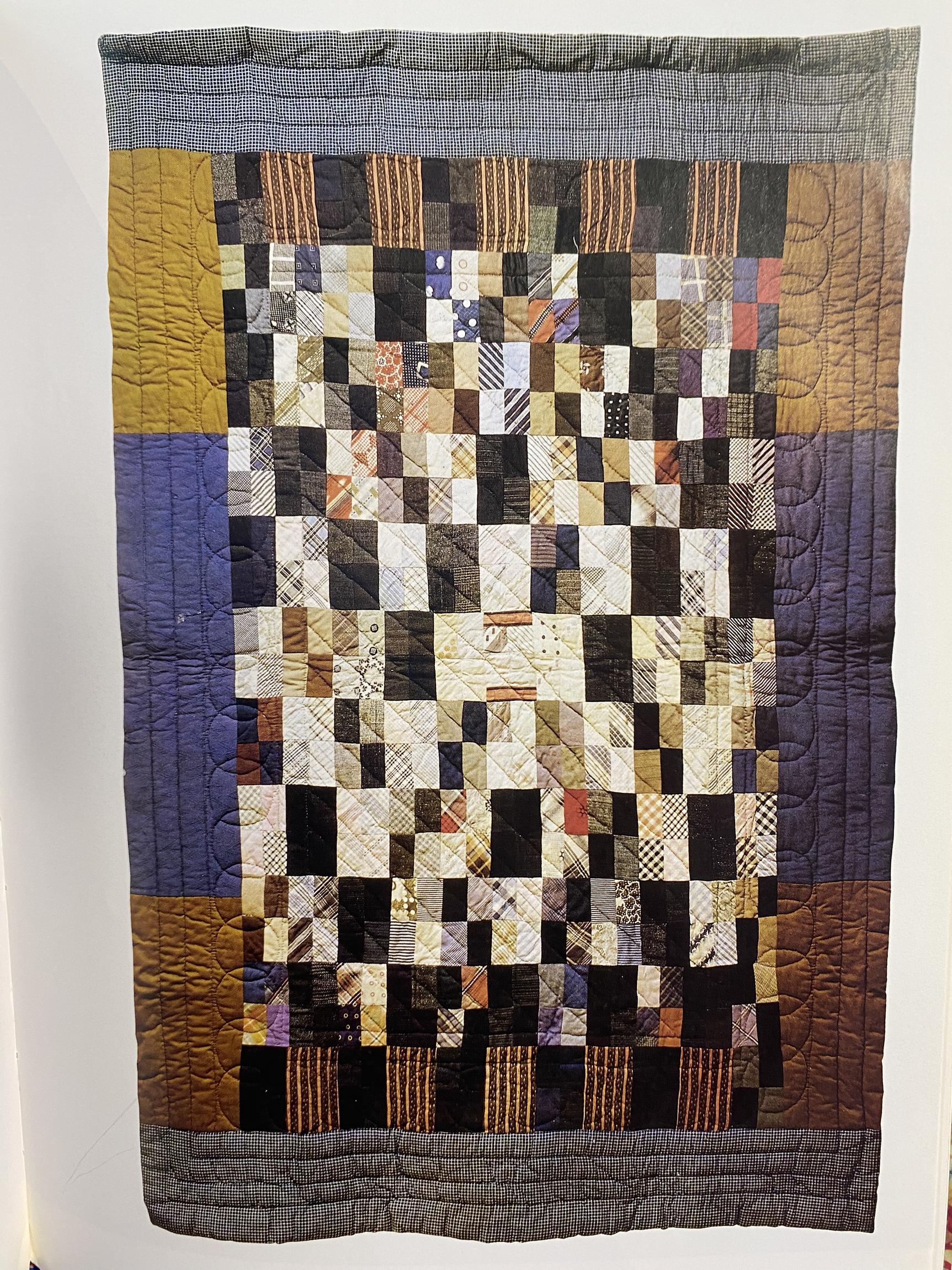
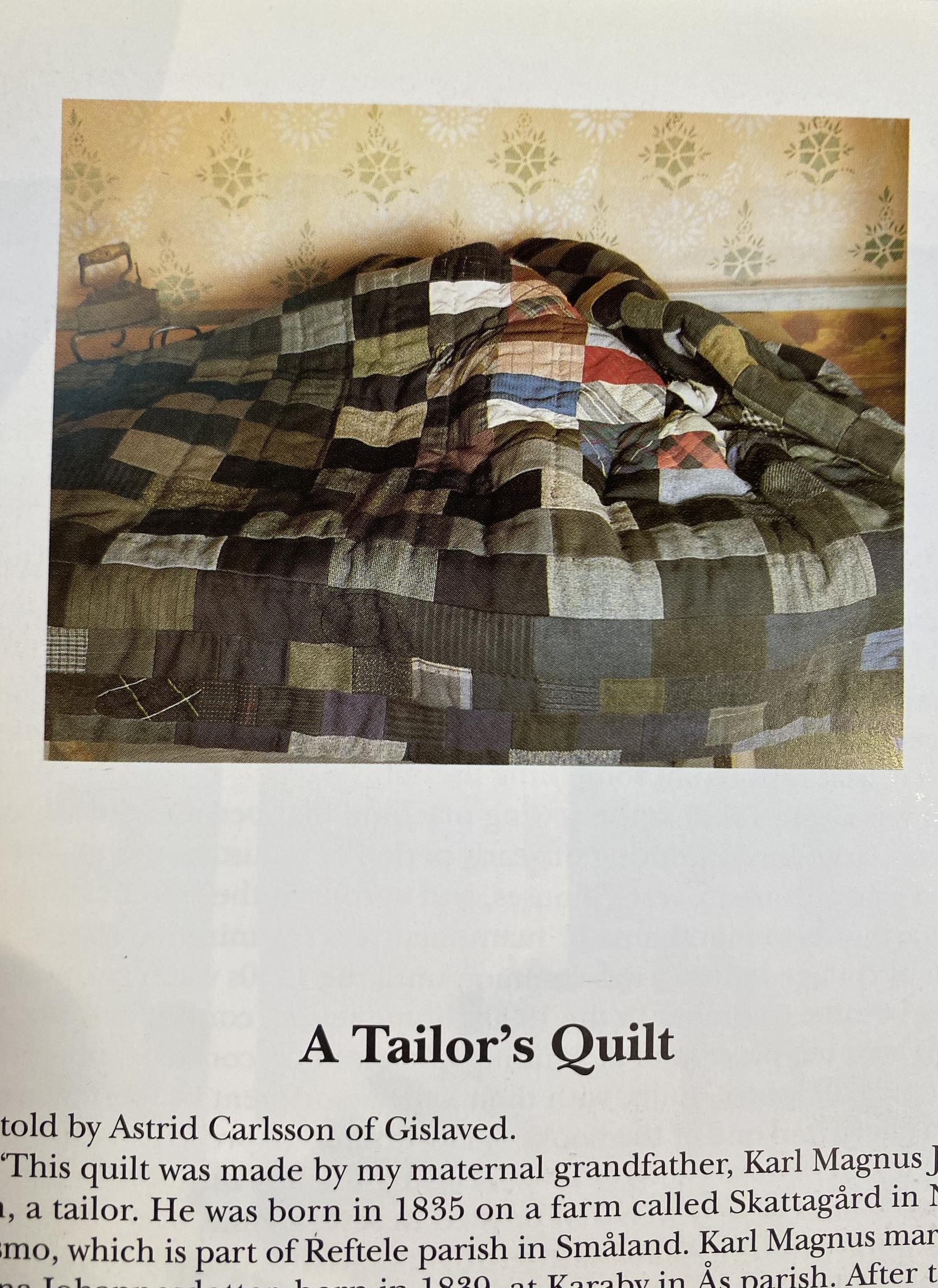
A lot of us have hang-ups about our creativity for both common and personal reasons. It takes a lot to get past the voices of the critics in our heads, and the distractions of life to sit down and make something. My training was in a fine art context, where quilts are not historically accepted as “Art”. Despite this dismissal, I have seen and experienced first-hand that making quilts is an access point for people of all ages and genders to connect with their own creative impulses. Quilting has been an underestimated medium for so long, perhaps the stakes are lower and it is unencumbered by the baggage of other media. We can embrace the joy of arranging colors and shapes into a larger pattern because we’re not putting the pressure on ourselves to create some kind of pristine masterpiece. I have seen many painters and sculptors embrace textiles and quilt making processes after their children are born and they need a non-toxic medium that can be put down at a moment’s notice or picked up for short periods of time throughout the day.

The quilt I sleep under every night, getting a little air on the front porch a couple of weeks ago.
Quilts carry stories, they show skill and creativity, they keep us warm and comfort us. Making quilts connects us to those who came before us, whether we directly inherited a lineage of sewing or not. It is a way to resist the speed and constant consumption of modern life. It helps us to connect to our bodies, both in the process of making and in the enjoyment of the finished piece. Are there quilts in your closet, waiting to be reconsidered, used, and appreciated?
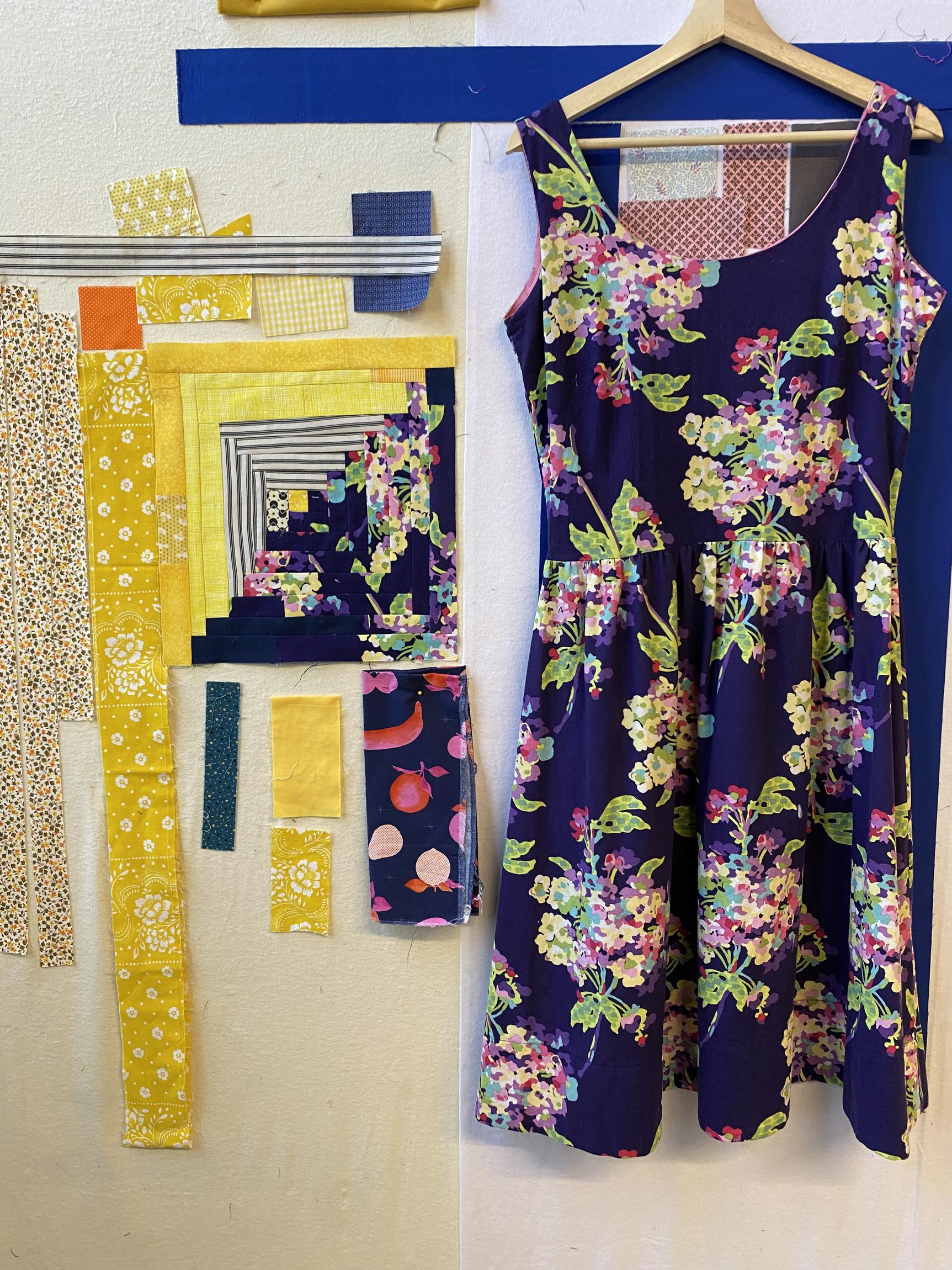
The current project in my studio: slowly turning a dress I made into a quilt.
Are you curious about making quilts and don’t know where to start? There’s a class for that, and it’s coming right up. Nothing New: Make a Quilt From Old Clothes runs November 10-13 at North House.
